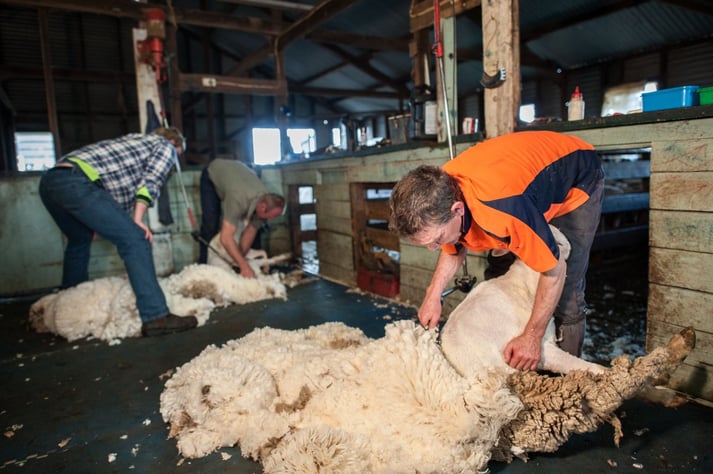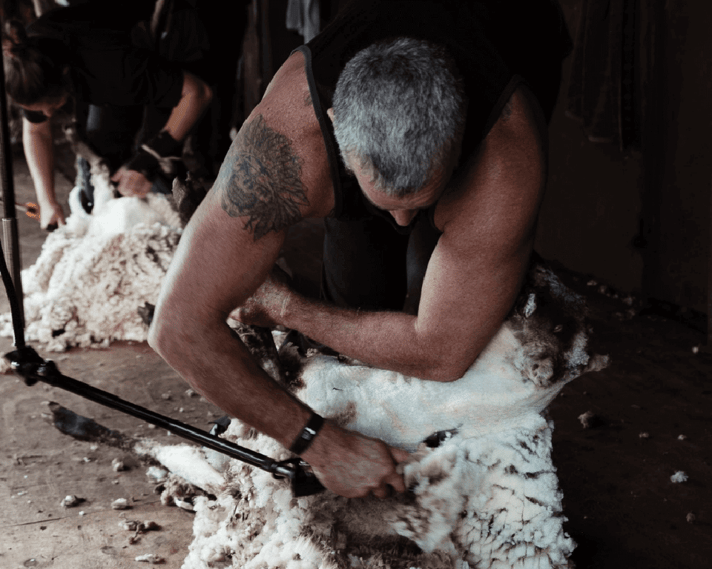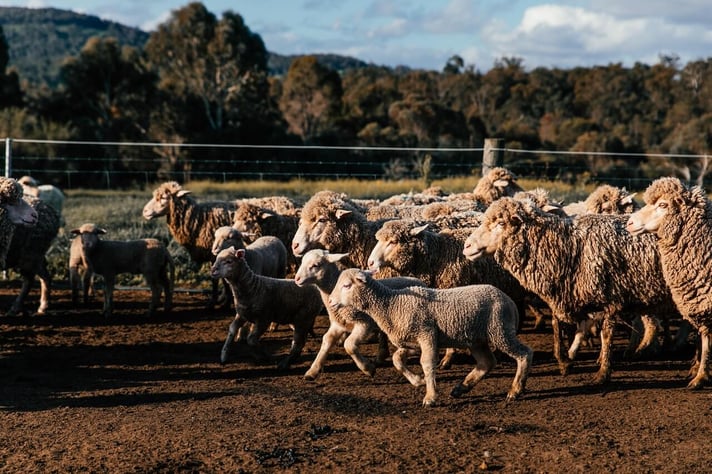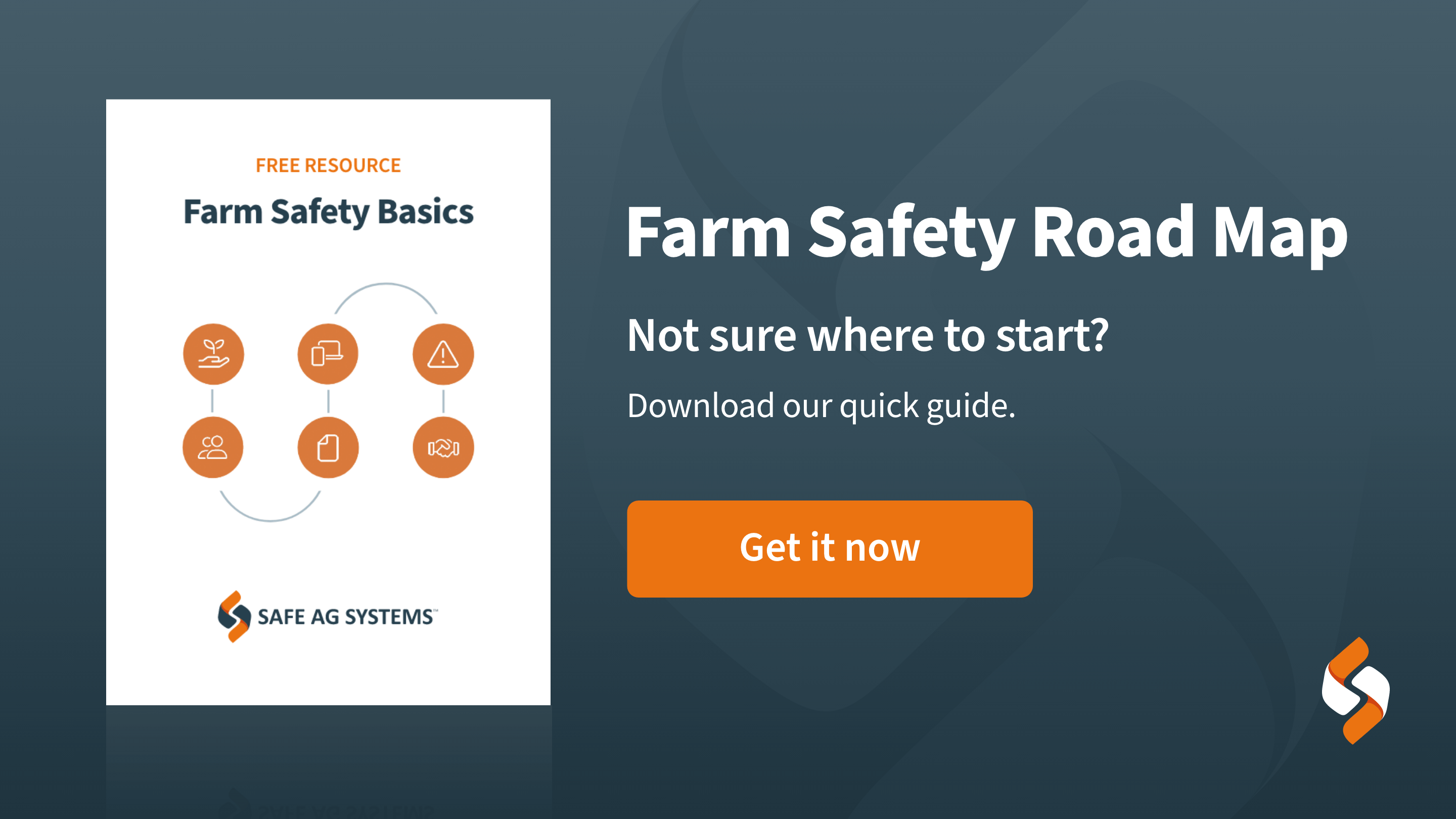New to farm safety and not sure where to start? We've got a guide made just for you.
Sheep shearing is undoubtedly the most iconic activity in rural Australia. There are approximately 2,000 working shearers left in Australia today. When we think of shearing, we all know it’s hard, physical work – whether you’re a shearer, shed hand, classer, or penner.
In researching this article, it was difficult to find any real data about shearing injuries. Data usually comes from claims – insurance, workers’ compensation, or litigation. The absence of such data is probably due to many involved in shearing working as independent contractors, so they are less likely to make such claims. Even so, it’s widely understood the main types of injuries are:
- back, knee, shoulder, arm and hand injuries
- slips, trips and falls
- cuts and bruising
- crush and foot injuries
- noise exposure
- chemicals, vapours, fumes and dust exposure
Whether the crew are your employees or contractors, you still have the same duty to ensure a safe workplace. There are so many hazards associated with sheep shearing, it’s hard to work out what’s the Top 5. So, let’s break it down to the 5 key components of sheep shearing and look at them in a bit more detail and find ways to make the season a bit safer.
The shearing shed
Given the shearing shed is where the action happens, it makes sense to ensure it’s ready to go and you’ve dealt with any problems before shearing starts.
Make sure there is good access to the shed and there’s room to move around. Overcrowded sheds aren’t good for anyone – whether it’s on the shearing board or the main floor. Keep plenty of space around stands, allowing for left-handed shearers, and in the wool room so classers and rollers have room to work.
Keep trip hazards out of the work area, elsewhere, make sure there is a clear path to move. There needs to be space for people to be able to throw, skirt, roll, class and store wool so a clearance of at least 1m around wool tables and 2m between the table and any machines is recommended.
Raised boards, entry stairs and other levels which are 1m or higher need to have protection to stop people falling. Railings are the best way to prevent a fall. Make sure steps have nonslip tread and are wide enough.
Having a secure fixing point for a shearers’ back harness above the board essential. It needs to be clear of the overhead shaft and within reach when standing on the floor. The harness and its mounting must be clear of any electrical wiring, leads or installation.

Machinery
Sheep shearing sheds can be dangerous places, with the main risk being physical injuries from the work itself. However, the biggest danger comes from machinery, which can cause severe injuries. For example, a woman once lost her hair and scalp when it got caught in an overhead shaft. To prevent such accidents, the shaft is high enough to avoid contact with raised arms, or guarding is in place, there is a good chance of no one being injured.
It's also important to make sure that parts like downtube mechanisms are in good shape and properly installed. If not, they can lead to injuries like wrist or arm strain, or even overheating. Additionally, all machinery should have joint guards to protect workers from getting hurt. Shearing tools should be well-maintained to avoid vibrations, jams and injuries.
The on-off ropes need to be well positioned to prevent twisting and stretching of the shearers’ back. If not correctly placed, workers might have to struggle with the sheep and the rope at the same time. Before starting shearing, it's essential to check all electrical connections and cables to avoid any accidents. Electrical cables should be suspended high enough to prevent contact.
Wool presses are particularly dangerous, as they can trap body parts easily. They should have a functioning interlock door and safety features like a trip bar or emergency stop at a height that workers can reach.
Hydraulic lines need to be inspected before use, and there should be a failsafe system to prevent the press from falling when it's in the top position. Moving parts like belts, flywheels, and pulleys must be adequately guarded.
Shearing sheds are also very noisy, with the sound of shearing machines, wool presses, grinders, engines, motors, and hydraulic pumps being loud enough to damage hearing. Adding a radio or music can make the noise even worse. It's crucial for workers to be able to hear warning signals and communicate with each other. Wearing hearing protection is recommended, if it doesn't interfere with safety or communication.

The Work
Now, let's focus on the actual work, which involves risks with live animals.
First, there's the danger of accidents like slips, trips, falls, getting hit by a sheep, crushing fingers, cuts from sharp objects or those that weren't fixed, and dog bites. Using good pen designs that help sheep move more easily can lower these risks.
Sheep shearing is hard work. Handling the next sheep, flipping it, and moving it to the board is just the beginning. Many shearers use suspension back harnesses to lessen the strain on their backs and muscles. Sheep are getting bigger and have more fleece, making it harder to move them during shearing or crutching. Let-go chutes might not be suitable for larger animals, so they might need adjustments.
Also, sheep that run away can be dangerous for shearers and workers. When shearing rams, it's important to have someone nearby to help if the ram escapes, whether that's by turning off equipment or catching the sheep. Sheep that are wet should be left to dry before shearing to avoid infections and other health issues for the shearers.

Working in the heat and cold
Shearing is physically hard work – really hard work. Do that in a hot tin shed and you have serious risk to the health. Or working in winter and having cold winds blasting on shearers backs can result in all kinds of aches and pains over and above the usual.
It’s vital that when working in the heat that all workers maintain fluid levels. Dehydration is a result of sweating and can lead to things like heat stroke. Make sure everyone drinks plenty of water or juice on a regular basis, not just when they feel thirsty as this can often be too late. At least 250ml (1 cup) before and after each run, and if possible small drinks during the run can significantly reduce the risk of dehydration or heat related illness. Heat stroke can be life-threatening if not treated immediately. Make sure everyone knows to watch for signs of heat related illness such as fatigue, dizziness, irritability, inattention, muscle cramps and people making silly mistakes. If someone was sweating then seems to stop, this is a sign of danger.
Working with cold winds blowing in can be reduced by putting covers over openings, such as let-go chutes. Clear plastic blinds, like you see in cool room doorways, can reduce the amount of cold air blowing in.
.png?width=710&height=568&name=Untitled%20design%20(2).png)
Hygiene
Ensuring that your hands are completely clean after dealing with sheep is an essential part of responsible animal care. A thorough wash followed by drying your hands can significantly reduce the risk of spreading any harmful substances or pathogens. This attention to hygiene is not just about personal cleanliness; it plays a key role in preventing the transmission of diseases among livestock and maintaining a safe and healthy farming practice. So, always remember to prioritise hand hygiene after handling your flock.
When you notice any sheep exhibiting symptoms of sickness, keep them away from both humans and other livestock. This strategy plays a vital role in preventing the potential spread of illness and helps to ensure that the health of the flock remains intact.
Keeping up with vaccination and parasite management practices is important and should be done whenever the situation calls for it. Regularly implementing these strategies can prevent outbreaks and maintaining overall health standards. It is also essential to ensure that vaccinations, which may pose risks to human health, are administered by a qualified veterinarian. These professionals possess the necessary training and expertise to handle vaccines safely, understanding the potential side effects that could arise.
Topics: Working with Livestock

Disclaimer: Content on this website may be of relevance to users outside of Australia, but content links and examples are specific to Australia. Please check with your local authority for your country and industry requirements.











